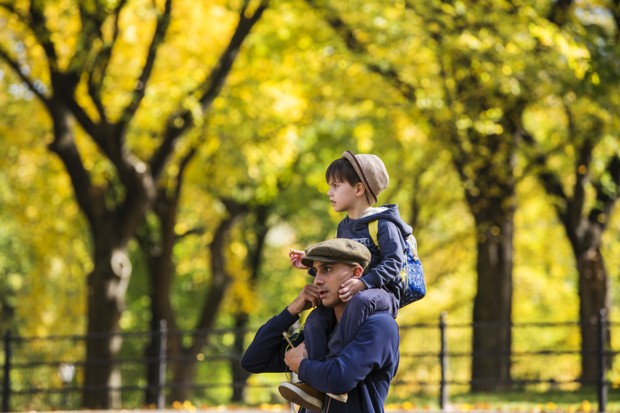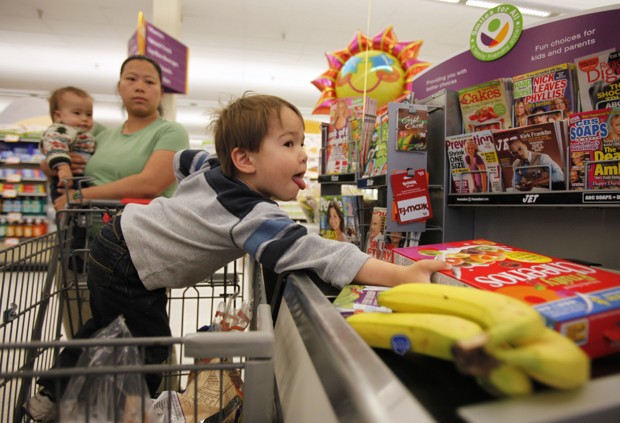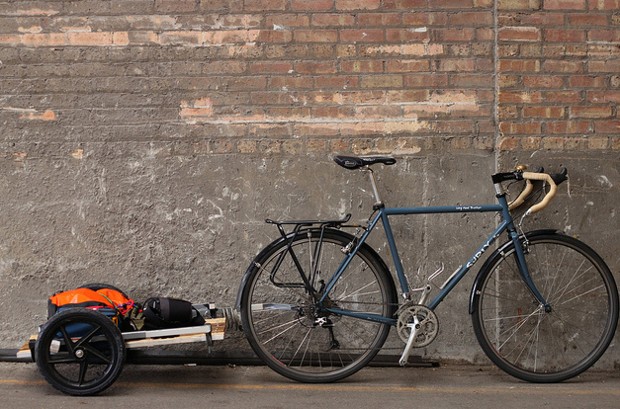You can do it.

If your family leaves the suburbs for the city, there are certain changes that you might expect: You’ll need to master subway transfers, teach your kids how to swipe a transit card, acclimate to a constant din, figure out a place to have packages sent when no one’s home to buzz the postal guy inside. But there are also a bunch of unexpected adjustments that can throw you for a loop, especially if you decide to leave your car behind.
“It turned out that navigating a walkable city wasn’t as simple as just tossing on my bag over the shoulder and going out the door,” says Tamara Griffin, who recently moved from Atlanta to Washington, D.C. “It involved things that would be second nature to people who have lived in cities all their lives: How am I going to get my groceries home? How am I lost again? Why did I think heels were a good idea?”
We compiled other tips from people who made the move.
From our partners:
The Problem: You live in a walk-up and have a sick pet or kid who doesn’t want to leave the house.
Solution: Find someone to come to you.
You might already enlist on-demand apps like Fresh Direct when you can’t haul something back from the store. And you may also know that there are hair salons, tailors, and other folks who will come to your place when you can’t venture out. The same applies to doctors—for yourself and your pets. “We found a vet who—for a small fee—makes house calls,” says Katie Hammel, who lives in San Francisco with two cats.
According to Dr. Matthew Nebel, who runs The Visiting Vet NYC, the extra fees depend on the pet’s condition, but an annual exam and vaccinations run about $95, while an emergency house call starts at $150. Blood work, medicines, and injections are extra.
Many doctors who treat patients of the human variety—like Sickday in New York or Chicago Express Doctors—advertise rates comparable with most internal medicine clinics in their city of work.
The Problem: You find yourself running out multiple times a day for errands.
Solution: Make the most of your trips.

If you have a car, maybe it doesn’t feel like such a big deal to go to the drug store, come home, and then go out to pick up dry cleaning. When you have to walk or take public transit, though, it can feel much more tedious. “Being without a car pushes me to think up alternatives to a lot of little trips I’d have made otherwise,” Carrie Kirby says. She offers the following advice:
-
Go digital. Do you really have to drop off your kid’s permission slip in person? Ask the teacher or scout leader if you can scan and email it instead.
-
Avoid running out to the store for one thing. If you’re cooking, substitute something else. If you have Amazon same-day delivery in your area, you may be able to get what you need quickly that way. (Of course, this doesn’t necessarily save gas or pollution, but it saves you from having to get back on the train.)
-
Consolidate exercise with errands. If you’re planning to go out and walk for exercise, find a route that passes a post office or drug store.
-
Stay closer to home. If your dentist or hairdresser is on the other side of town, it might be time to find a new one, unless they’re really special enough to justify the trip.
The Problem: There’s an event that is seriously out of walking or biking range.
Solution: Take advantage of renting.
You know that you can hail an Uber or Lyft if you’re going to a party on the other side of town. But if you’re used to heading out of town for a weekend every now and then, it can be hard to get used to not having a car. Renting is not such a bad deal, especially if you subscribe to a membership service such as Zipcar, which starts at $7 per month. You can often pick up and return cars at locations around the city (or an airport if you are traveling), avoiding the cost of a parking spot—which can be in the tens of thousands of dollars.
“Even in months when we rent a car for a few days, we still spend less than we would on a car payment, insurance, and parking,” Hammel says.
The Problem: On a given Saturday, you’ve got a half-dozen plans—and they’re all in different parts of town, with tons of transfers.
Solution: Limit your commitments.
Being car-free in Seattle led Kristen Gill, to learn to say “no” more often. “I only say ‘yes’ to those events that are of true interest to me, which has also changed my lifestyle for the better,” Gill says.
In an article for Psychology Today, the physician and wellness expert Susan Biali noted that, in order to get your social commitments in order, it’s helpful to remember that whenever you say ‘yes’ to something, you’re are saying ‘no’ to something else.
Bili gave an example from her own life: a woman emailed asking her to meet up for career advice. In return, Biali offered to set up an hour of consultation time, like she does with others who seek career advice, but the woman pressed again for a free meeting.
“If I gave this person even a half hour of my time, it might mean skipping or rushing lunch, or failing to take my dog out for her (and my) very necessary second walk of the day, or not posting a (hopefully useful) blog post that will get read by thousands of people who also need help,” Biali wrote. She said no.
The Problem: Struggling to navigate errands with kids in tow.
Solution: Invest in a cargo trailer and kids’ bikes.
When Carrie Kirby, 42, her husband, and three children made the move to Alameda Island, California from Chicago, they made the decision to leave their old, high-mileage Subaru behind.
“Groceries, school, our kids activities, as well as a downtown full of shopping and dining, are all within walking or biking distance. Our island is one of the few totally flat areas of the Bay Area, so getting around by bike is easy,” says Kirby, who runs the blog Car-Free Mom. “We picked up a used bike trailer that we used at first to carry the smaller kids. The trailer also came in handy for hauling groceries. Then when our younger kids got bigger and onto 2-wheelers themselves, we converted the trailer to cargo-only.”
Whether you’re new to the city or are simply considering cutting down on car use, the adjustment from front-seat to foot-powered transportation can be a little bit smoother.
This feature originally appeared in CityLab.





















